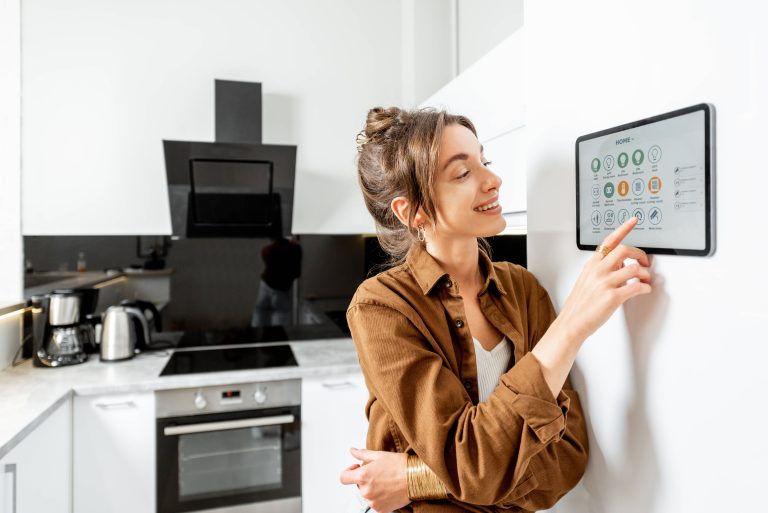
In an age where technology is designed to make our lives more convenient, the concept of voice commands has become increasingly popular. It’s a futuristic idea come to life; speaking to your devices to make things happen is genuinely magical. For smart home enthusiasts, creating a seamless hands-free experience by setting up voice commands can elevate the functionality and comfort of your home. Let’s dive deep into how you can achieve this in your smart home ecosystem.
Why Voice Commands?
Voice commands bring genuine convenience to the table. Imagine cooking in the kitchen with dirty hands and effortlessly playing a song, turning on the lights, or answering an urgent call—all with just your voice. It’s a game-changer for accessibility, offering great benefits for those with mobility issues or disabilities. By establishing effective voice command protocols, you free up your hands for other tasks, improve operational efficiency, and enjoy a more immersive, tech-savvy lifestyle.
Choosing Your Voice Assistant
The first step in setting up voice commands is selecting a voice assistant that suits your needs. The major players in this space are:
– Amazon Alexa: Available on a variety of devices such as Echo Dot, Echo Show, and third-party gadgets.
– Google Assistant: Found on Google Nest devices and integrated into many Android phones and other smart devices.
– Apple Siri: Primarily used on Apple products like HomePod, iPhones, and iPads.
Each assistant has its strengths and weaknesses. Amazon Alexa has the most extensive range of skills and supports the largest number of smart home devices. Google Assistant is praised for its capability to understand context and complex sentences. Siri, while often limited to Apple’s ecosystem, offers seamless integration with iOS devices and strong privacy controls.
Preparing Your Smart Home Environment
Before diving into setting up voice commands, ensure your smart home devices are compatible with your chosen voice assistant. Here’s a checklist to guide you:
1. Smart Speakers: These are the physical devices through which you will give voice commands. Ensure they’re strategically placed around your home for optimal use.
2. Smart Lighting: Brands like Philips Hue, LIFX, and TP-Link offer products that can be easily controlled via voice commands.
3. Smart Plugs: Devices like Wemo, TP-Link, and Amazon Smart Plug allow you to control any appliance plugged into them.
4. Smart Thermostats: Nest and Ecobee are popular choices that can be managed via voice command for optimal home temperature control.
5. Security Devices: Cameras, doorbells, and alarm systems from brands like Ring, Arlo, and Nest can also integrate with voice assistants for improved home security.
6. Home Entertainment: Enhance your media experience with smart TVs, speakers, and streaming devices that support voice commands.
Setting Up Voice Commands
Step 1: Device Setup
Start by setting up each smart device according to the manufacturer’s instructions. Ensure they are connected to the same Wi-Fi network for seamless integration.
Step 2: Voice Assistant Configuration
1. Amazon Alexa:
– Open the Alexa app on your smartphone.
– Under Settings, select “Device Settings” and add new devices.
– Follow the on-screen prompts to complete the setup.
2. Google Assistant:
– Use the Google Home app.
– Tap on the ‘+’ icon to add new devices.
– Follow the instructions to link your devices.
3. Apple Siri:
– Open the Home app.
– Tap the ‘+’ icon and select “Add Accessory”.
– Scan the HomeKit code on your device or enter it manually.
Step 3: Customizing Commands
Customize your commands to ensure they are intuitive and functional:
1. Naming Devices: Use simple, distinct names for each device. For example, label your living room bulb as “Living Room Light.”
2. Creating Routines: Set up routines to perform multiple actions with a single command. For instance, you could create a “Good Morning” routine that turns on the lights, starts the coffee maker, and reads out the day’s weather forecast.
3. Grouping Devices: For easier control, group similar devices. For example, group all bedroom lights together so you can turn them off with a single command like “Turn off Bedroom Lights.”
Step 4: Testing and Troubleshooting
Once everything is set up, thorough testing is crucial:
1. Voice Recognition: Ensure your voice assistant accurately recognizes your commands and makes the necessary adjustments. If not, recalibrate the voice recognition settings or rename devices to avoid misunderstandings.
2. Signal Strength: Make sure your Wi-Fi signal is strong in all the areas where you plan to use voice commands. Weak signals can lead to unresponsiveness or delays.
3. Integration: Verify that all third-party apps and services are correctly integrated with your voice assistant. Sometimes newer devices may require additional steps for integration.
Maximizing Your Voice Command Experience
1. Learning New Skills and Actions: Frequently explore the app store or the assistant’s settings menu to discover new skills, actions, and updates that can enhance your smart home experience.
2. Voice Profiles: If you have a household with multiple users, set up individual voice profiles. This feature allows the assistant to recognize different voices and provide personalized responses based on the person speaking.
3. Regular Updates: Keep your devices and apps updated to make sure you’re benefiting from the latest features and security improvements.
4. Privacy Settings: Be aware of your privacy settings. Regularly review what data is being collected, and adjust settings to align with your comfort level.
Conclusion
Setting up voice commands in your smart home is not just a convenience—it’s a lifestyle transformation. It’s about making everyday tasks easier and creating a living environment that’s truly in sync with your needs. From minor daily chores to major home system adjustments, the power of voice commands brings unparalleled ease and efficiency into your home life. With a thoughtful setup and a bit of customization, you can achieve the ultimate hands-free experience. Happy automating!







